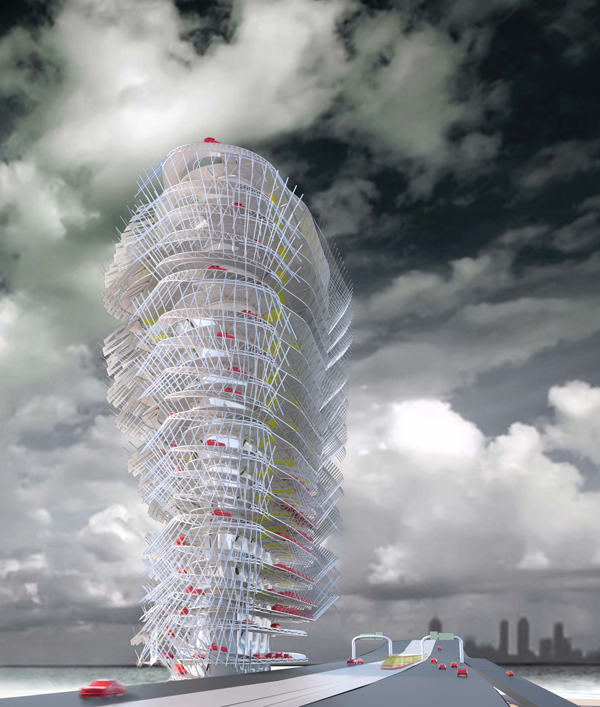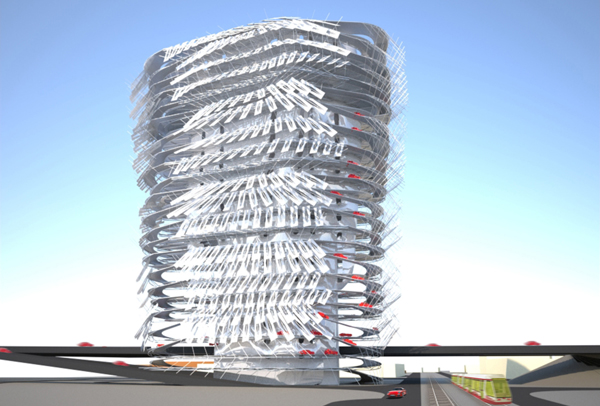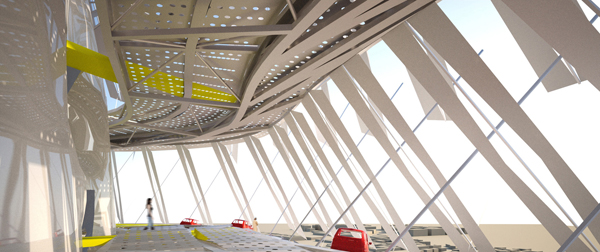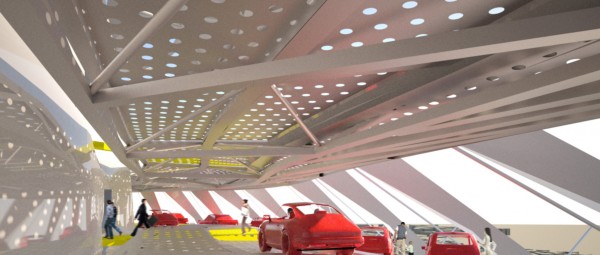Abu Dhabi is a car culture. The vast distances between destinations, the extreme heat and sand storms, the quality of the existing public transportation systems, and the current low cost of petrol in the UAE make the automobile the default means of transportation.
Compressive looks at this existing condition and, more specifically, the car as a representation of human beings’ very worst and very best achievement. While the resources consumed to manufacture and operate the car are astounding, the personal freedom the car affords is something that every society should strive for (personal freedom, that is). The car is an integral component of our existing lifestyle, and Compressive reexamines the interaction between person and car at various scales, while also questioning the current understanding of the parking lot as a type of “service space.” By utilizing the car as another form of vertical transportation the building can begin to register occupation by reacting to the weight of cars parked on various floors. By sectionally arranging the main programs of the mixed-use tower, groups of up to 5 floors will actually begin to sag with the weight of cars based on program use at different times throughout the day. The dynamic façade system intensifies this condition by folding out and up when the floors compress, allowing for more ventilation throughout the parking area in order to counteract the greater number of cars. Whatever solar protection is lost by the folding façade is made up for by the new condition of shorter floor-to-floor height of the surrounding parking ramps.
The compression is brought back to the scale of the human where the yellow pedestrian paths make their way from the parking spaces across the car ramps to the interior. When a car approaches a pedestrian path the road reacts locally to the car’s weight, causing an inverted speed bump and ensuring pedestrian safety. This reaction to the weight of occupation allows the user an intuitive understanding of not only their own impact on the space, but the impact of the aggregated population surrounding them as well.
Compressive was designed as part of the advanced Exotic Variables and States of Change studio led by Thom Faulders at the California College of the Arts. The challenge presented to the students was to examine emerging pattern models that would allow for growth and adaptive response, enabling them to explore process-driven territories and architectures of exaggeration. This approach allowed for an extension to current practices of environmental engagement to include exotic possibilities and novel formations, gained through artful entanglement and irregular conditions – pushing beyond simplistic notions of functionalism and economy.



















